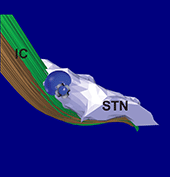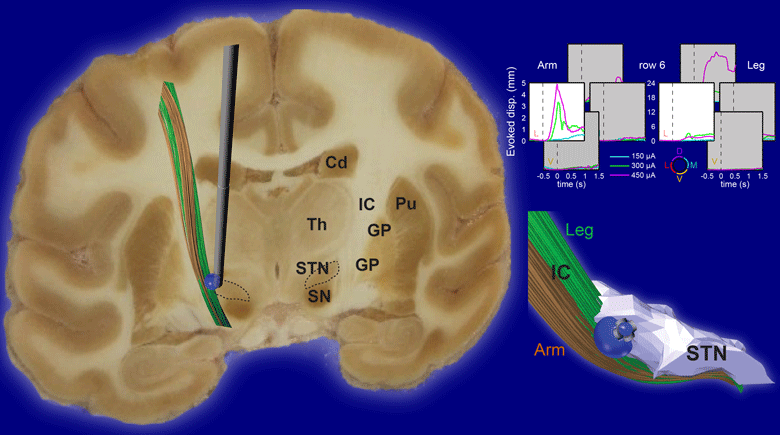Allison T. Connolly,Rio J. Vetter, Jamille F. Hetke, Benjamin A. Teplitzky, Daryl R. Kipke, David S. Pellinen, David J. Anderson, Kenneth B. Baker, Jerrold L. Vitek, and Matthew D. Johnson, University of Minnesota, NeuroNexus, USA.
This work aims to develop and characterize the functionality of a novel thin-film probe technology with a higher density of electrode contacts than are currently available with commercial deep brain stimulation (DBS) lead technology. Such technology has potential to enhance the spatial precision of DBS and enable a more robust approach to sensing local field potential activity in the context of adaptive DBS strategies. Thin-film planar arrays were microfabricated and then assembled on a cylindrical carrier to achieve a lead with 3D conformation. Using an integrated and removable stylet, the arrays were chronically implanted in the subthalamic nucleus and globus pallidus in two parkinsonian non-human primates.
Here we provide the first in vivo data from chronically implanted DBS arrays for translational non-human primate studies. Stimulation through the arrays induced a decrease in parkinsonian rigidity, and directing current around the lead showed an orientation dependency for eliciting motor capsule side effects. The array recordings also showed that oscillatory activity in the basal ganglia is heterogeneous at a smaller scale than detected by current DBS lead technology. These 3D DBS arrays provide an enabling tool for future studies that seek to monitor and modulate deep brain activity through chronically implanted leads. We believe such DBS lead technology with a higher density of electrode contacts has potential to enable sculpting DBS current flow and sensing biomarkers of disease and therapy.
Further information can be found at the University of Minnesota Neuromodulation Research and Technology Laboratory (NRTL) website: http://neuromod.umn.edu.
Keywords: current steering, deep brain stimulation, neural engineering, implantable biomedical electrodes


